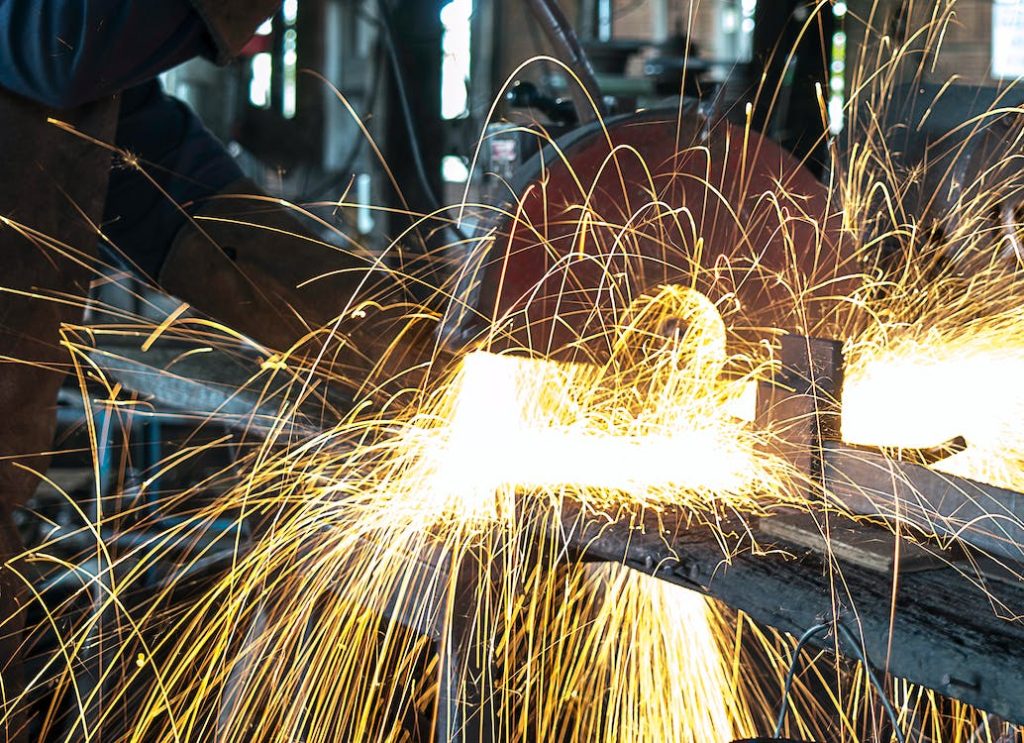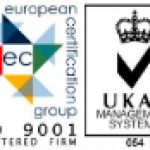Advantages of MIG Welding

MIG welding is also sometimes known as Gas Metal Arc Welding (GMAW). It is a popular welding technique used often by steel fabricators including our team of experts at C&C Fabrications. It uses an electric arc to create heat, melting the metal being welded. A wire feeder, controlled by a welding power supply, is used to provide a continuous feed of filler metal into the weld pool. This creates a strong and consistent joint.
What are the advantages of MIG welding?
Speed – is one of the primary advantages of MIG welding. With a wire feeder that provides a continuous feed of filler metal, a welder can make quick and consistent progress. So this makes MIG welding ideal for large-scale projects or high-volume production runs. In manufacturing or industrial settings where speed and efficiency are crucial, MIG welding can help increase productivity and reduce production time.
Versatility – MIG welding is a versatile welding method. It can be used on a wide range of metals including aluminium, stainless steel, and mild steel. This versatility makes it a popular choice for a variety of industries, including automotive, construction, and manufacturing. It also allows welding teams to work with a variety of materials without the need for different welding techniques or equipment.
Good for outdoor use – another advantage of MIG welding is that it can be used in any weather condition. The shield gas used in MIG welding protects the weld from external atmospheric conditions such as moisture and wind, making it suitable for both indoor and outdoor use. This is particularly useful in outdoor environments where other welding methods may not be effective or safe due to external factors. Being able to work in different weather conditions means that projects can be completed on time and reduces the impact of weather on the welding process. Additionally, this versatility means that businesses do not need to have separate indoor and outdoor welding facilities, increasing their flexibility and efficiency.
Produces high-quality welds – and another big advantage is that it produces high-quality, clean welds with minimal slag and splatter. This results in a finished product that is visually appealing and has increased strength and durability. MIG welding produces a small, precise weld pool that creates a strong bond between the base metals being welded. This results in a higher quality weld with fewer defects than other welding methods. The lack of slag and splatter also makes MIG welding an ideal choice for applications where a clean weld surface is critical, such as automotive or aerospace industries, where the aesthetics of the finished product are important.
Other things to consider
The cost of MIG welding equipment can be high, particularly for small businesses or individual welders who may not have the budget for high-end equipment. MIG welding requires a power source, wire feeder, shielding gas, and other consumables such as wire and contact tips. Industrial-grade MIG welders can be expensive, and the cost of consumables can also add up over time. For small businesses or individual welders who are just starting, the initial investment in equipment can be a significant obstacle to overcome, which may make MIG welding less attractive than other welding methods.
MIG welding also requires a shielding gas to be used to prevent the weld from being exposed to the atmosphere. This can add an extra expense to the welding process, and if not handled properly, can also be a potential hazard. However, our team of experts is trained in the safe handling of all welding equipment, gasses, and other potential hazards to ensure the welding process is safe and efficient.
MIG welding is typically easier to perform in a flat or horizontal position, which can limit its application in certain welding projects that require overhead or vertical welding. While it can be used in these positions, additional equipment, technique, and experience may be required to produce high-quality welds. Therefore, the limitation in welding positions can be a disadvantage of MIG welding in certain situations.
In MIG welding, the wire feeder is an essential component that requires regular maintenance and replacement of parts such as wire and contact tips. These parts are subject to wear and tear and replacing them can add to the overall cost of the welding process. Additionally, failing to manage these replacements professionally can result in interruptions in welding, affecting productivity and efficiency. Therefore, it is essential to ensure that the parts are regularly checked and replaced to avoid such issues.
And finally, another thing to consider is the lack of portability is one of the limitations of MIG welding equipment. The machines are often bulky and heavy, making it difficult to use them in tight spaces or remote locations. This can be a disadvantage for welders who need to move their equipment frequently.
The choice of welding technique will depend on the specific requirements of a project and the skill level of the welder. MIG welding is an excellent choice for many applications, but it’s not suitable for all situations. So it’s important to weigh the advantages and disadvantages of MIG welding before deciding if it’s the right choice for your particular project.
To discuss your steel fabrication and welding needs, get in touch with our team of experts.



